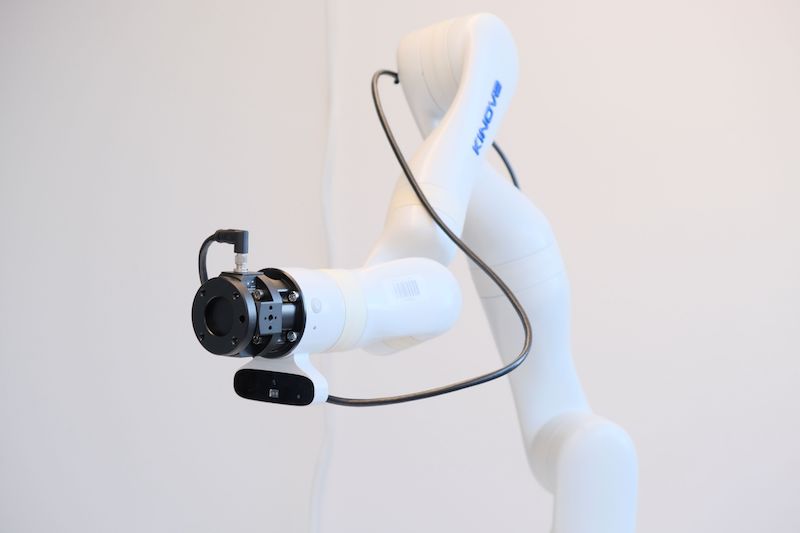Bota Systems and Kinova partner for easy installation of force torque sensors
Bota Systems, a pioneer in multi-axis force-torque sensors, announces it is working with Kinova, and has developed the Bota Kinova Kit to make it quick and easy to mount the Bota SensONE force torque sensor on a Kinova Gen3 robot arm.
Kinova will show the kit with the Kinova Gen3 robot as a hand-guiding demo at its booth A16 at ICRA, the IEEE International Conference on Robotics and Automation, from 29 May – 2 June 2023, in London, UK.
The 6-axis SensONE force torque sensor from Bota enhances the end-effector force torque sensitivity of the Kinova Gen3 robot. The mounting kit makes it easy to install the sensor on the robot arm with just a few screws (supplied).
Rodolphe Rosset, Sales Director, Research and Academic at Kinova, says: “While our Gen3 robot already has a built-in torque sensor, adding the Bota sensor takes its precision and sensitivity to a whole new level – meeting the demands from research laboratories for higher precision and higher sensitivity.”
As previously announced, Bota will also be showing its smallest sensor yet, the MiniONE, at ICRA (booth I19). Designed to enhance micro-robotic systems with haptic feedback, the MiniONE is a six-axis sensor that is simple to install between a robot arm and almost any end-of-arm tooling (EOAT).

Weighing only 30 g, and with a tiny footprint, the MiniONE is ideal for medical applications, product testing, and precision tasks like micro-assembly and micro-polishing. It provides an ultra-low-noise signal, with high sensitivity and outstanding drift performance.
With a diameter of just 30 mm and a depth of 22.2 mm, the MiniONE requires no external hardware. It is a “plug and play” design that includes temperature sensors and built-in filters, making it easy to program and set-up.
A robotic force torque sensor is a device that measures force and torque when they are applied on its surface. By using the measured signals in real-time feedback control, robots can perform challenging interaction tasks. The sensor used most commonly in robotics of this type is a complete six-axis sensor, which measures forces and torques on three axes each.

